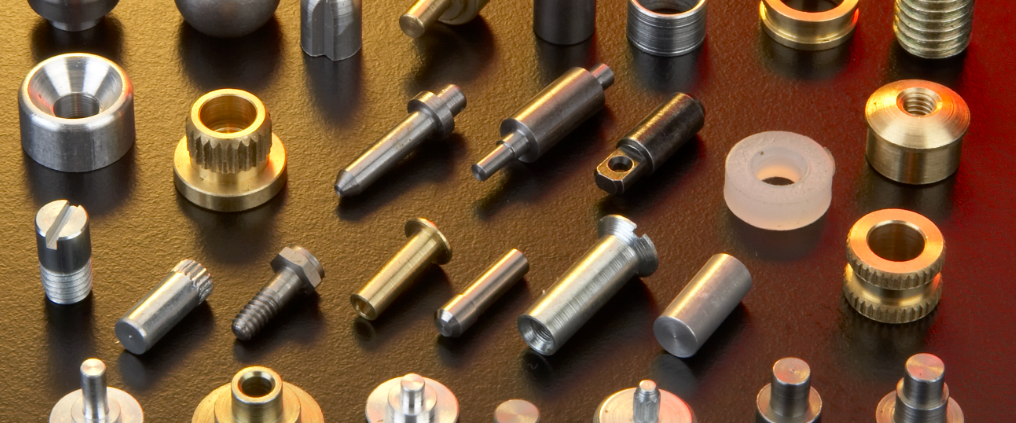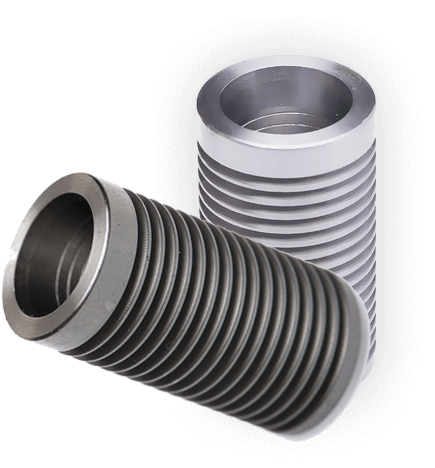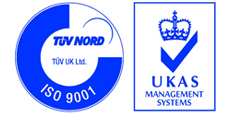Choosing Material for CNC Turning: Pros and Cons
Material choices for your parts impact the product’s efficacy and the costs of machining, so it’s important to consider this carefully. For example, some metals are easier to machine than others, such as aluminium and brass, though their soft and ductile properties may make them less strong and durable than steel or titanium. To weigh up the various factors in choosing materials for turned parts, consider both:
- the properties required for the part to function
- the specific capabilities of CNC lathes
CNC Turning affects Material Choices
There are certain properties a material must have to be suitable for CNC manufacturing, which are not as important in other machining methods.
- The material must be strong enough to withstand machining forces without cracking.
- As CNC machines work quickly, the cutting tool can become hot. The material should be heat-resistant enough to avoid melting under the tool.
- Coolant and lubricants are used to keep the machinery functioning. If the chosen material is incompatible with these substances, a reaction may occur that leads to corrosion of the part, damage to the machine or even injury.
In this guide, you’ll read about materials appropriate for use with our CNC turning services.
Material Properties to Consider
The part’s purpose & function dictate the material properties to prioritise. For example, pipe fittings for hot water systems must be resistant to heat and corrosion.
Strength
In material terms, there are two types of strength: Tensile Strength and Impact Resistance.
Tensile Strength is shown by the UTS (ultimate tensile strength), which is the point at which the material breaks under tension. UTS is usually measured in megapascals (MPa).
Low tensile strength is less than 100 MPa. High tensile strength is greater than 400 MPa.
High-tensile strength materials are required for pressure systems, levers, gears, shafts, axles and bolts.
Impact resistance is the material’s ability to resist cracking or fracturing under sudden and intense impact, such as something heavy falling onto it. It indicates the energy the material can absorb without failure, measured in joules (J). Impact strength increases with material thickness and is highly dependent on heat treatment and alloys.
High impact resistance is required in construction, automotive, aerospace and sports equipment manufacturing, for example.
Materials which are optimum for machinability may not always suit the design purpose but post processing heat treatment can often allow the tensile strength and hardness values to be increased in steel components.
Machinability
There is a direct link between the machinability of a material and how long the machining will take, as well as the strength of tools required, and therefore the cost of manufacturing when using this material. If you don’t necessarily need Titanium, it’s unwise to choose this material.
To make sure your turned parts manufacturing order is cost-effective, choose the most machinable material possible for the other required properties and seek advice. We’d be happy to offer help.
Thermal and Electrical Conductivity
Every metal conducts both heat and electricity to an extent, but some are more conductive than others. Copper is an excellent conductor, which is why it is used in electrical wiring, while titanium is not particularly conductive.
Popular materials for CNC Use
Steel
Steel is justifiably the most popular material choice for general engineering applications and therefore machining in turn due to its huge range of strengths, hardness, ductility and durability. in application, finishes will often need to be applied to steel also overcome possibly its greatest weakness which is corrosion.
Carbon Steel is strong, durable and lightweight, with high machinability. Low or high-carbon steel are both easily machined for a material of this hardness, hence it’s popularity and is easily alloyed to obtain different properties and has a
Mild Steel is affordable, malleable and durable. Because of its superior malleability, mild steel is often used for customisation where its shape is .
Aluminum
Lightweight but also durable, aluminium is a popular metal for turned parts.
- Easy to machine
- High Strength-to-Weight ratio
- Corrosion-resistant
- Conducts Heat & Electricity well
Aluminium is ideal for intricate designs and small parts because of its high machinability.
This material is frequently used for aircraft parts, general engineering, computer components, cookware, and more.
6000 series aluminium is commonly known as a workhorse, useful in many applications and will anodise to passivate corrasion and improve appearance.
For stronger aluminium, 7000 series alloys are best. 2000 series alloys are made softer and more ductile to increase tensile strength & fatigue resistance. 2000 series alloys are particularly easily machined and will therefore reduce machining times and cost to produce markedly.
Brass
Brass turned parts are also popular. This copper-zinc alloy is strong, ductile and very easily machined!
- Corrosion-resistant
- Maintains shape under extreme conditions
- High strength
- High ductility
Brass is well suited to parts that are subjected to high pressure and wear and tear, such as parts for plumbing systems, valves, sockets, gears, and casings. Popular choices that are readily available are CW614N (CZ121) for general machining and CW606N (CZ131) where manipulation is required without cracking in rivetting or bending applications for example.
Stainless steel
Stainless steel turned parts are highly successful.
- Excellent resistance to rust and corrosion
- High strength alloys
- Highly polishable
Because steel can achieve a high-shine finish, it is ideal for parts that require both form and function.
Titanium
Titanium is strong, hard-wearing, and light and therefore commonly used in aerospace engineering where its strength to weight advantages are so compelling as to override its exorbitant cost .
However, the relative density of titanium makes it hard to machine. It requires much stronger cutting tools, more frequent stops to deburr the tools and longer machine time. Because of this, together with the aforementioned high material cost, titanium is not cost-effective for many applications.
Other
Carbon Steel is strong, durable and lightweight, with high machinability. Low or high-carbon steel are both easily machined for a material of this hardness, so more people are using carbon steel for turned parts than before.
Mild Steel is affordable, malleable and durable. Because of its superior malleability, mild steel is often used for intricate parts that require high accuracy or customisation.
Material Selection Process:
1. Examine the Function of the Part
Will the part be under high pressure or exposed to wear and tear? If yes, it needs high durability & tensile strength.
Is it a bushing, gear, enclosure or shaft? If yes, it needs high-impact strength.
Is smooth, frictionless action a priority? Does it need to fit exactly? If yes to either of these, choose an easily machineable metal.
Does your part need to conduct heat or electricity? Choose a material with good conductivity such as aluminium.
Will the part be exposed to water, chemicals, salt, etc.? Choose a corrosion-resistant material such as brass or stainless steel.
2. Regulatory Requirements
Check whether your industry has ISO material requirements or similar to ensure the safety and efficacy of parts. Let this guide your decision.
3. Finalise Requirements & Selection Criteria
Based on the first two sections, you will have established a set of criteria for material selection. Consider various alloys and grades of each metal, keeping in mind machinability, cost, and availability.
4. Create a Shortlist
From your criteria, you should be able to create a list of alloys & grades that meet all criteria, to a lesser or greater extent. Then, evaluate the trade-offs between material properties, cost and application priorities.
Compare the cost of each material, machining costs and any additional costs for treatments or finishing.
From these considerations, you can make a final selection of the right metals for your CNC-turned parts.
For more assistance, contact our team.
We’re always happy to discuss materials and help you understand our costs. Our aim with this guide has been to support correct CNC material selection with enough detail and advice, without creating overwhelm.






